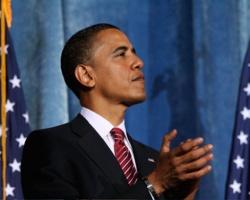In the early days of his administration, President Barack Obama has developed an unusual pattern as he talks about religion: He regularly puts nonbelievers on the same footing as religious Americans.
It is a rare gesture for a U.S. political leader. But what makes Mr. Obama’s outreach especially remarkable is that it is accompanied by public displays of faith that sometimes go beyond even those of his religiously oriented predecessor in the White House.
The outreach toward both ends of the religious spectrum makes for a complicated balancing act, one that runs the risk of alienating one group, the other, or possibly both.
Mr. Obama speaks easily about his own faith. White House events, even those without a religious theme, often begin with a prayer. And the president said he would expand President George W. Bush’s outreach to faith-based organizations.
At the same time, he has taken a series of policy steps that are troubling to religious conservatives, and pledged that decisions in his administration would be governed by science. He reversed Bush policies on funding for international family-planning groups and stem-cell research, and he has moved to rescind regulations that allow health-care workers to opt out of duties that offend their beliefs.
But even when taking these stands, which would be expected of a Democratic president, he often makes a point to say that he understands the other side.
That stance could win him respect from both sides, but it will be difficult to pull off. “Showing respect and being inclusive will only take the president so far,” said John C. Green, senior fellow at the Pew Forum on Religion and Public Life.
If Mr. Obama makes too many policy decisions that run counter to religious conservatives, Mr. Green predicted that they won’t support him, no matter how much they appreciate the outreach.
At the same time, he said, nonreligious Americans could become irritated with outward expressions of religious faith.




